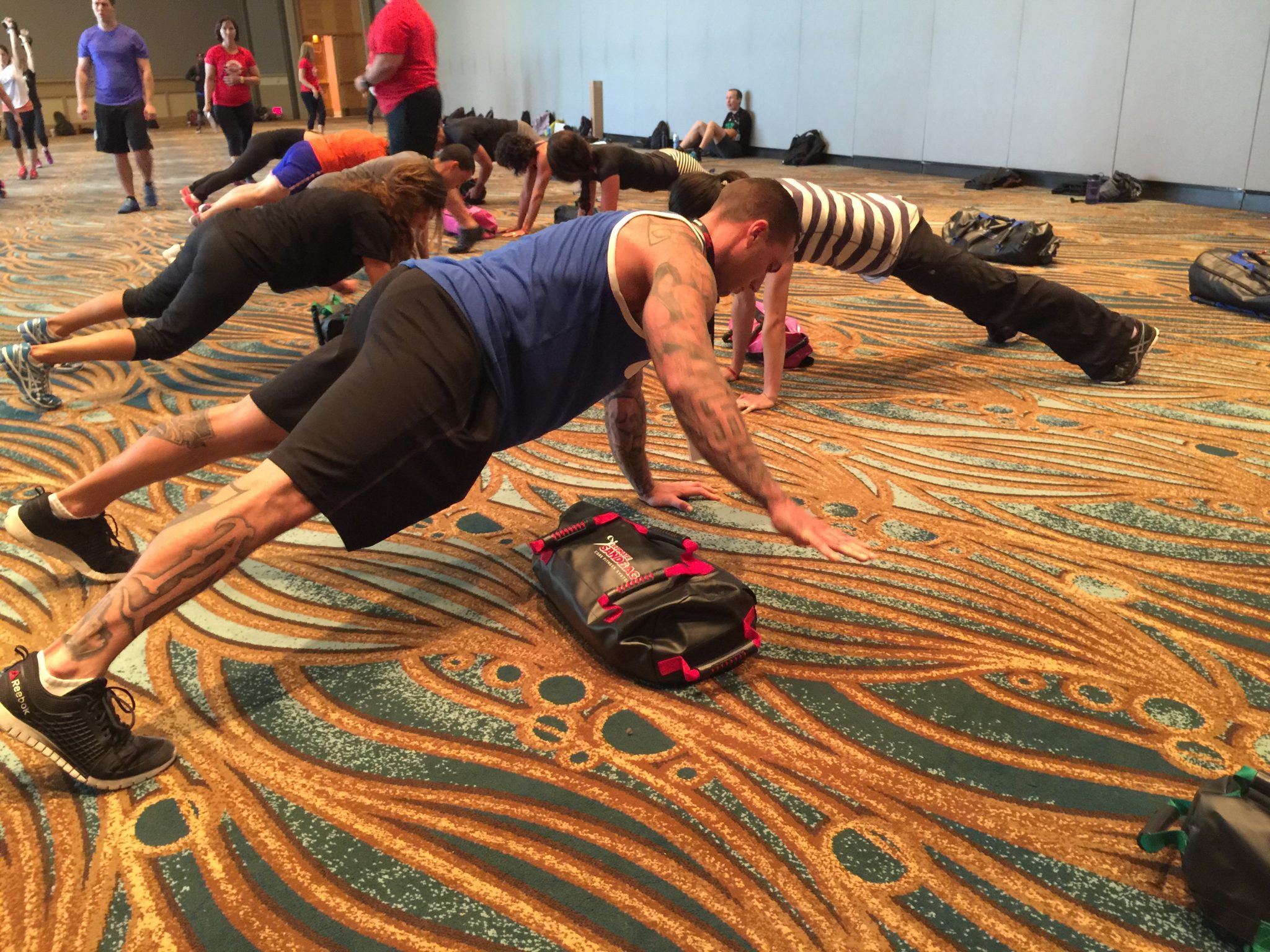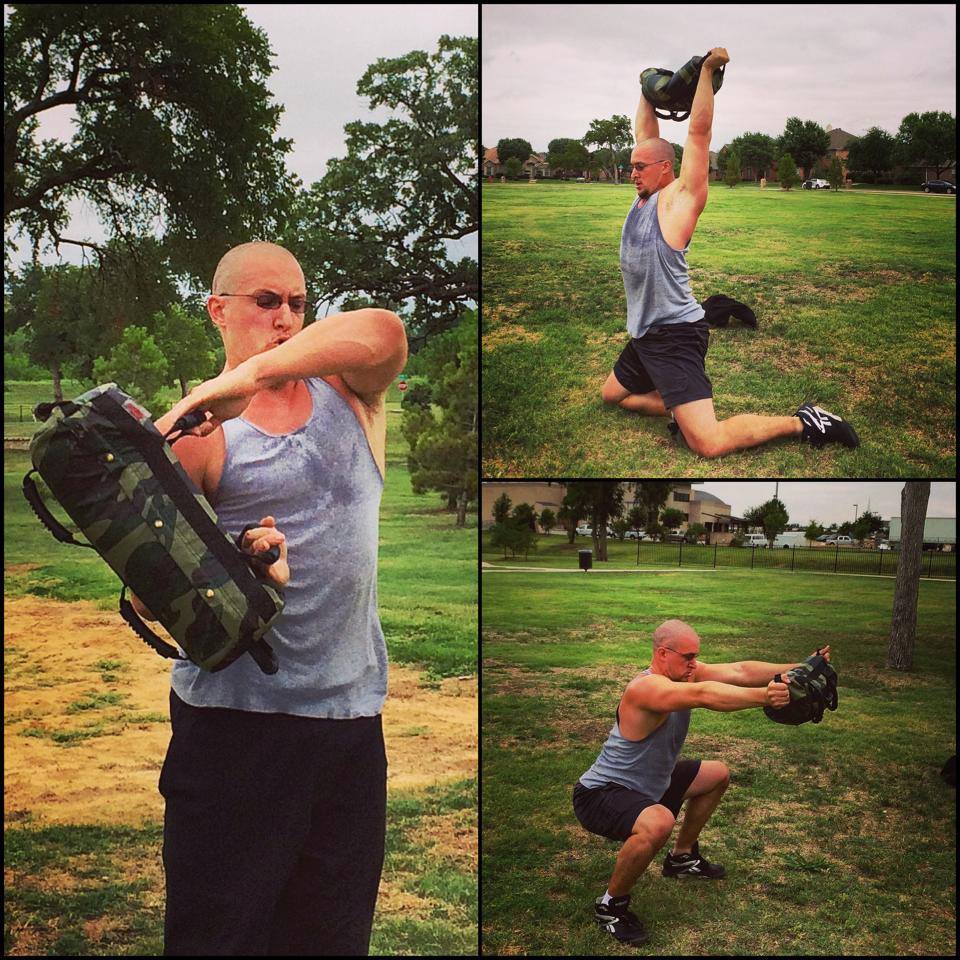What Experts Say About Strength
2015-08-24
It started off as just something we would say in passing and now has really become a true mantra of our DVRT Ultimate Sandbag Training.
“Strength isn’t just what you lift, but what you resist!”
This simple idea is something that really separates the concept of functional training from much of the worlds of bodybuilding, powerlifting and even Olympic lifting. Yea, I know focusing on what we lift, how much we lift is the very basis for most of what we think about as “strength training”, but we already have examples of the strength of “resisting” forces being a BIG thing in our training.
How do I mean? The whole point of different planking exercises is to RESIST the movement of the body. Front squats? Why are they so much harder than back squats? Because you have not just move up and down, but RESIST the weight pulling your body forward. A good overhead press? Yea, just like a plank, done well means you don’t lean back or move anything but the weight over the crown of the head.
So, resisting force is fundamental to a lot of our existing strength ideals, but we don’t really talk a lot about it. Slowly it is happening more because of renown coaches like Mike Boyle and Gray Cook. These two gentlemen have been some of the most important to raise awareness that having the ability to decelerate can often be the biggest key in better performance and resiliency to injury.
Coach Boyle often will use a great quote from physical therapist Shirley Sahrmann. In Sahrmann’s book, Diagnosis and Treatment of Movement Impairment Syndromes, she states “during most daily activities, the primary role of the abdominal muscles is to provide isometric support and limit the degree of rotation of the trunk…A large percentage of low back problems occur because the abdominal muscles are not maintaining tight control over the rotation between the pelvis and the spine at the L5- S1 level. ” (2002 p.71)

Resisting other forces is fundamental to many of our core DVRT Ultimate Sandbag Training exercises.
Don’t worry if that looked like foreign language, what you can take away from the above comment is that really a huge function of our “core” is to actually resist excessive movement. That is one big reason that planks became so popular (in case you never really were sure why you should plank other than you felt your “abs”). As we have talked a lot in our DVRT Ultimate Sandbag Training posts, planks are just a starting point. We REALLY want to be able to accomplish a lot of the same ideas when we perform dynamic actions. Just like you see in today’s DVRT Ultimate Sandbag Training video.
That is why in DVRT Ultimate Sandbag Training we talk SO much about how you lower the Ultimate Sandbag and what your posture and position looks like when are not just trying to move heavier load, but move it in a new direction.
We can expand on the importance of such training because many of you might be thinking, “cool, but what does it all really mean?” In his published article in the North American Journal of Sports Physical Therapy, Cook et al, stated, “It should be noted that the movement dysfunction is usually a problem with sequence and stabilization rather than a deficiency in strength of a prime mover.”
Okay, confused again? No worries! Stabilizers tend to be the muscles that prevent motion while prime movers are typically the muscles that create the motion. Things get a bit more interesting when you realize that a muscle can be a prime mover or a stabilizer depending upon what you are actually doing. That is why moving in different directions like with do in DVRT Ultimate Sandbag Training is SO very important! Your prime movers can be kicking butt, but if your stabilizers are weak and not working right you can be really limiting your fitness.
What is the moral of the story? If you can start working these things into your program you will find fitness plateaus being busted, but even more importantly you will probably see great improvements in how you move and feel!

Many people lose the value of DVRT Ultimate Sandbag Training because they don’t understand the goals of the exercises, makes sure YOU know the “why’s”
-Learn how to lower weights all the time. Only “dump” the weight if you get in a compromised position.
-Move in different directions. Learning to move up and down well is important as a base, but then progress to moving in all sorts of angles to make sure you train the body in 360 degrees.
-Movement and posture are ALWAYS your guideline. If you add a new stress (i.e. weight, plane of motion, size of Ultimate Sandbag) and you see alterations to your or the clients posture, it is too much!
© 2025 Ultimate Sandbag Training. Site by Jennifer Web Design.






